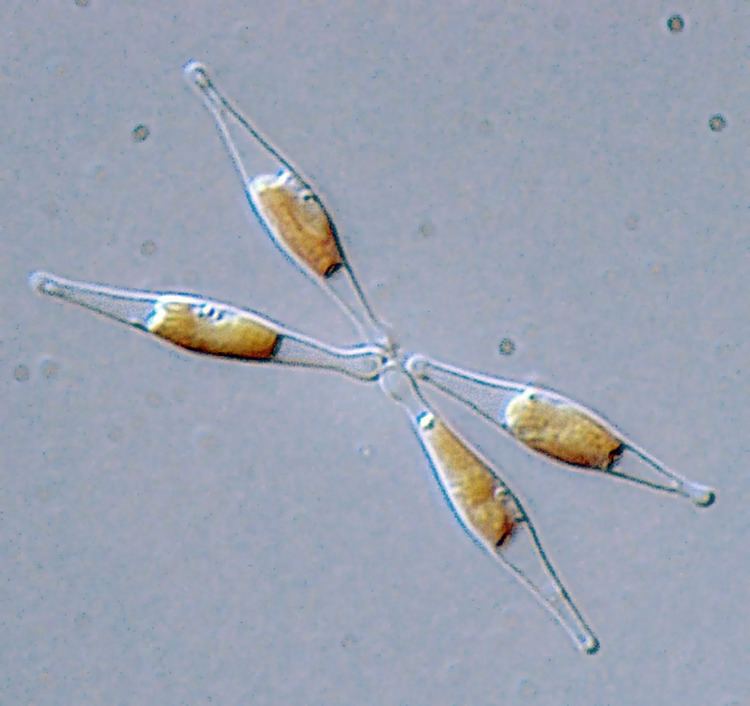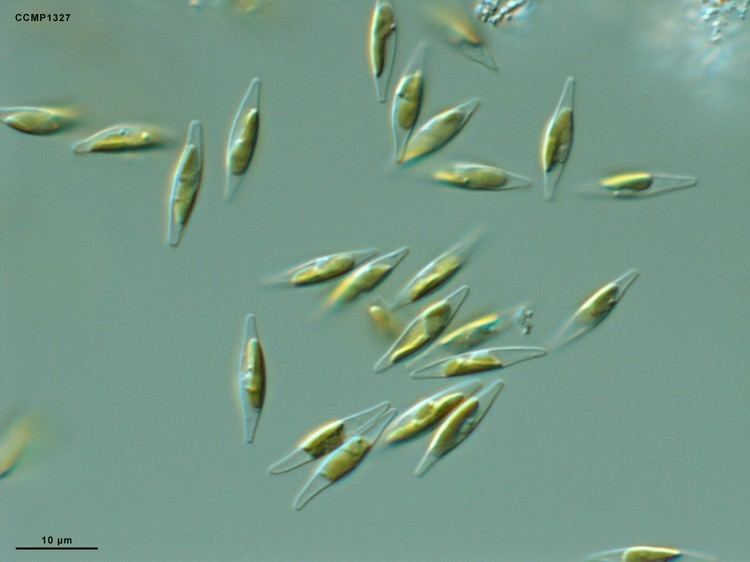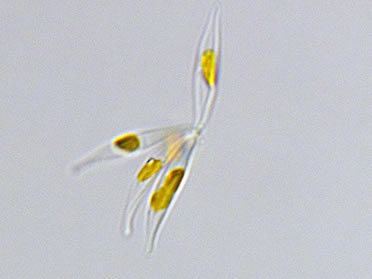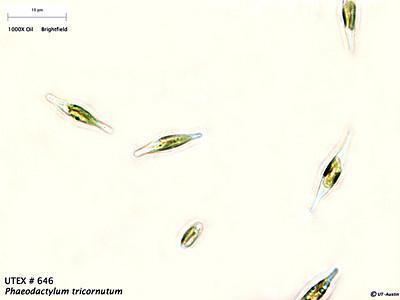Superphylum Heterokonta Genus Phaeodactylum Higher classification Phaeodactylum Order Naviculales | Family Phaeodactylaceae Scientific name Phaeodactylum tricornutum Rank Species | |
 | ||
Similar Thalassiosira pseudonana, Thalassiosira weissflogii, Nannochloropsis, Eukaryote, Diatom | ||
Phaeodactylum tricornutum is a diatom. It is the only species in the genus Phaeodactylum. Unlike other diatoms P. tricornutum can exist in different morphotypes (fusiform, triradiate, and oval), and changes in cell shape can be stimulated by environmental conditions. This feature can be used to explore the molecular basis of cell shape control and morphogenesis. Unlike most diatoms P. tricornutum can grow in the absence of silicon, and it can survive without making silicified frustules. This provides opportunities for experimental exploration of silicon-based nanofabrication in diatoms.

Another peculiarity is that during asexual reproduction the frustules do not appear to become smaller. This allows continuous culture without need for sexual reproduction. It is not known if P. tricornutum can reproduce sexually. To date no substantial evidence has been found to support sexual reproduction in a laboratory or other setting. Although P. tricornutum can be considered to be an atypical pennate diatom it is one of the main diatom model species. A transformation protocol has been established and RNAi vectors are available. This makes molecular genetic studies much easier.

Gene sequencing

Phaeodactylum tricornutum is one of two diatoms whose genome has been sequenced (the other being Thalassiosira pseudonana). The genome contains approximately 10% prokaryote-like genes, an unusually large proportion. Over 30000 expressed sequence tags (ESTs) have been organized into the Diatom EST Database.

Phaeodactylum tricornutum has emerged as a potential microalgal energy source. It grows rapidly and storage lipids constitute about 20-30% of its dry cell weight under standard culture conditions. Nitrogen limitation can induce neutral lipid accumulation in P. tricornutum, indicating possible strategies for improving microalgal biodiesel production .
